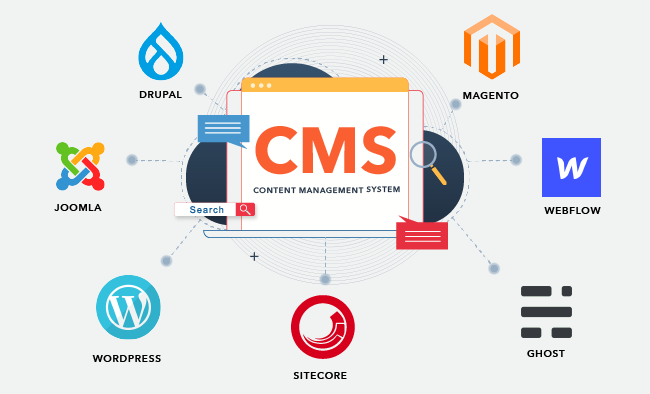Content Management System
A content management system (CMS) is a piece of computer software used for managing creation and editing of digital content. A content management system (CMS) is an application used for managing Web content, which allows for creation, editing, and publishing by multiple collaborators. A CMS provides a graphical user interface with tools for creating, editing, and publishing web content, without having to code it from scratch.
A content management system, commonly abbreviated as a CMS, is a piece of software that helps users create, manage, and modify content on a website, without requiring specialist technical knowledge. A content management system (CMS) makes it possible to build and operate a professional website with no programming knowledge, and with a minimum of costs. A content management system (CMS) is an application that helps you to build and manage a website through a user-friendly interface, instead of having to deal directly with code.
A CMS platform (content management system platform) is a software component that allows easy management of content and creation of websites. A CMS that is based on a SaaS allows a wide range of users to create websites, manage content, and deploy them across digital channels, all at once. From a rich admin dashboard, Drupal helps you fully manage content presentation, along with managing users and permissions.
Joomla is an ideal choice for any site which needs complete content management: educational institutions, for instance, or sophisticated websites such as social networks. The second main benefit of the CMS is that it allows non-technical people, who are unfamiliar with coding languages, to create and easily manage their web content. A CMS is a place for creating, managing, and storing digital content, and works best with structured content – like documents and database records.
Content Management Application (CMA): The front-end interface that allows CMS users to add, remove, and modify digital content in a streamlined experience. You can create and manage content, customise your sites design, and install extensions to add features to your site — all without coding. Hosting services such as Kinsta even help you install the content management system for you (WordPress, in this case), so you can get right to building your website with no tech set-up required.
No matter how customized or standardized the system is, and how limited or robust, being able to administer your website and control the content without code is powerful, and it could prove crucial to the way you run your online presence. Instead of building your own system to build webpages, store images, and perform other functions, a content management system handles all that core infrastructure stuff for you, so that you can focus on more front-end parts of your site. Based on market share statistics, the most popular content management system is WordPress, used by 40.4% of all websites on the web (although by definition, WordPress is a blogging/website builder system, rather than a full-fledged content management system), followed by Shopify and Joomla.
When an average person thinks about WordPress, he or she usually makes the mistake of thinking WordPress is just a personal blog platform, rather than a complete content management system capable of handling enterprise-level eCommerce sites as well.

